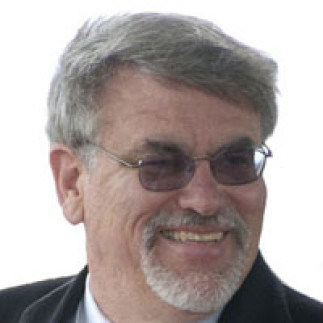*** Attention, en raison d'une maladie, le Professeur Zasadzinski doit annuler sa visite au Département de chimie ce mercredi 21 janvier. Sa conférence sera reportée à une date ultérieure, encore indéterminée. ***
Titre : Surface Viscosity: What it Tells Us about Order and Organization in Lipid Monolayers.
Endroit : Pavillon J.A.-Bombardier, salle 1035 à 11 h
Hôte : William Skene
Cette conférence sera prononcée par le professeur Joseph Zasadzinski du Département d'ingénierie chimique et science des matériaux au sein de l'University of Minnesota. Elle est commanditée par le Centre de recherche sur les materiaux auto-assemblés (CRMAA) et sera donnée en anglais.
Résumé : We use photolithography to microfabricate ferromagnetic disks 1 micron in height and 20-100 microns in diameter, which contain a thin (100 nm) film of magnetic metal and a thin layer of gold. We can float these disks on a Langmuir trough and apply known torques to oscillate the disks to evaluate the surface viscosity and elasticity of lipid monolayers. As an alternative, we rotate 5 micron long, 300 nm diameter nickel wires in a magnetic field at the air-water interface. The small size of the disks and wires gives us sensitivity to small values of the surface viscosity that were impossible to access with macroscopic probes. We find that a surprising number of monolayers exhibit a Newtonian response with a constant surface viscosity over a range of surface pressures. We can identify second order phase transitions difficult to find with isotherms or X-ray diffraction methods. The composition dependence of surface viscosity is also surprising. Adding small fractions of cholesterol decreases the interfacial viscosity of dipalmitoylphosphatidylcholine (DPPC) monolayers by an order of magnitude per wt%. Grazing incidence X-ray diffraction shows that cholesterol at these small fractions does not mix ideally with DPPC, but rather induces nano-phase separated structures of an ordered, primarily DPPC phase bordered by a line-active, disordered, mixed DPPC-cholesterol phase. We propose that the free area in the classic Cohen and Turnbull model of viscosity is inversely proportional to the number of molecules in the coherence area, or product of the two coherence lengths. Cholesterol significantly reduces the coherence area of the crystals as well as the interfacial viscosity. Using this free area collapses the surface viscosity data for all surface pressures and cholesterol fractions to a universal logarithmic relation. The extent of molecular coherence appears to be a fundamental factor in determining surface viscosity in ordered monolayers.

